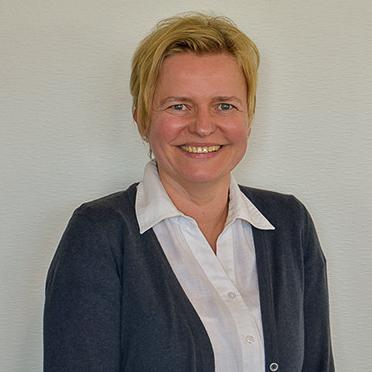
A blog post by Dorota Napierska, Chemicals Policy & Projects Officer – HCWH Europe
Medical textiles are fundamental in the delivery of healthcare, yet a lack of transparency on behalf of manufacturers means that we do not often know the substances used in such products or their production. We therefore do not fully understand the potential health risks and environmental impacts from their use and disposal.
Medical textiles – complex chemistry

Medical textiles are widely used in healthcare, including in personal protective equipment (PPE) such as facemasks, gloves, and gowns – meaning they are especially crucial during the COVID-19 pandemic. As a barrier for cross-contamination and infection, the common function of medical textiles is to block the transmission of bacteria and viruses between patients and staff.
Officially categorised as medical devices (a broad category), medical textiles are not only one of the most strictly controlled products, but they also have some of the most complex requirements in terms of functionality. Properties that are regularly in demand for medical textiles include: rigidity, bursting strength, air permeability, and liquid resistance. The construction, repellency, and pore size of fabric are particularly important factors in the performance of medical gowns for example.
Medical textiles are typically made from all major forms of textiles: fibre, yarn, roving, as well as woven and nonwoven fabrics. But to meet these varied and important requirements, chemistry plays a crucial role. Medical textiles are often treated with and/or contain harmful chemical substances, including toxic and/or endocrine disrupting chemicals (EDCs), such as per- and poly-fluorinated alkyl substances (PFAS), plasticisers, biocides, and flame-retardants.
The impacts of medical textiles

The manufacturing processes of medical textiles can involve emissions of harmful chemicals into the environment; the current trend for single-use, disposable products in healthcare (including medical textiles), means that there is also a significant environmental impact associated with their disposal - substances in medical devices can enter the air through incineration, for example.
There are also environmental impacts across the textile product life-cycle: carbon emissions from energy use and transport, as well as water and other primary resource use in manufacturing. This use of precious resources is exasperated by the focus on single-use, disposable items at a time when we are trying to reduce carbon emissions and protect natural resources. Additionally, there are growing concerns about increasing plastic pollution from the textile industry, with plastic polymers representing approximately 55% of textile fibres in use.
A reduction in single-use products will reduce manufacturing rates and can help to reduce chemical exposure for production workers. Reusable medical textiles also offer other benefits including improved comfort for the user.
Reusable textiles offer a more sustainable alternative to single-use disposable items, not only through reduced waste and costs but, importantly, there is also greater potential for reducing the overall amount of hazardous chemicals in reusable products. A reduction in single-use products will reduce manufacturing rates and can help to reduce chemical exposure for production workers. Reusable medical textiles also offer other benefits including improved comfort for the user.
Transparency and collaboration with industry
Unfortunately, due to a lack of transparency on behalf of manufacturers, it is difficult to precisely assess the nature and quantity of different chemical substances contained within medical textiles or used in their production. Current regulations do not require manufacturers to disclose their ingredients, or even to provide labelling on their product with this important information.
It is therefore typically when new legislation is introduced to restrict the use of certain chemicals and industry representatives request exemptions, that information on the use of those substances in medical textiles becomes publicly available. Even then, when companies make these requests, they rarely provide adequate information on the precise scope of derogation or the lack of alternatives to justify such an exemption.
There is an urgent need to publicly disclose information on the harmful substances used in the production of medical textiles (including their full hazard characteristics) as well the extent to which their use is required by the existing regulations and standards. This will in turn deepen our understanding of how certain chemicals fulfil essential functions and we can better understand the potential to substitute harmful substances without compromising their efficacy and, by extension, patient or staff safety or care. The concept of essential vs. non-essential use could be adopted for determining if such chemical substances are necessary or can be phased out.
There is an urgent need to publicly disclose information on the harmful substances used in the production of medical textiles (including their full hazard characteristics) as well the extent to which their use is required by the existing regulations and standards.
Reusable medical textiles were the norm for decades, but a trend for single-use, disposable products grew out of crises of transmittable diseases, such as HIV. Now, another virus is forcing us to review our healthcare practices again - the on-going COVID-19 pandemic has highlighted the desperate need for a more sustainable approach to providing and using/re-using medical textiles, in particular PPE.
We must take this opportunity to implement long-term and sustainable solutions. Along with functionality and safety requirements, we must consider environmental sustainability (including toxicity, waste, overall raw material and energy use) when designing such products and making procurement decisions. Some stakeholders have already expressed their willingness to explore and increase reuse and innovation opportunities for medical-grade PPE. The UK government, for example, wants to move away from disposable products by default and assess new types of PPE that are designed for reuse from the outset, particularly through UK manufacturing.
There is growing debate about the challenges and issues surrounding medical textiles and the movement towards safer and more sustainable products, as evidenced by our recent session at the CleanMed Europe 2020 conference - Medical textiles: Why tackling chemistry is critical. Panellists at this session shared their experiences with chemical substances used in medical textiles such as PFAS, their use of reusable medical textiles, and their work towards developing ecological repellents and antimicrobials, as well as more sustainable medical textiles. More than 100 committed participants participated in the discussion and there is a strong appetite for more dialogue on the relationship between chemistry, medical textiles, and sustainability.
Would you like to be part of this ongoing conversation?
Building on the successful examples of the National Substitution Group in Sweden and the informal Nordic collaboration Working Group, HCWH Europe recently established the Healthcare Market Transformation Network.
If you are an expert on textiles, a procurer of medical devices, a sustainability manager, researcher, or a representative from an environmental or sustainability NGO with expertise in this area, and eager to work with us to stimulate conversations, scale-up best practices, and catalyse innovation that bring more sustainable healthcare textiles to the market, join the network’s working group on medical textiles.